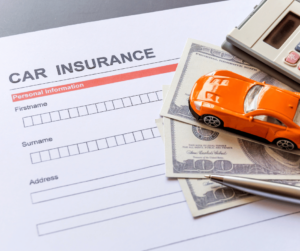
When it comes to insuring your vehicle, you’re likely to come across various options. One such option is third-party car insurance, which plays a unique role in the world of auto coverage. In this comprehensive guide, we will explore the ins and outs of third-party car insurance, shedding light on its advantages, limitations, and how it fits into the broader insurance landscape.
Understanding Car Insurance
Car insurance is a contractual agreement between an individual and an insurance company. It’s designed to protect you and your vehicle in the event of an accident, theft, or damage. Car insurance can come in various forms, with each offering different types of coverage.
Types of Car Insurance
2.1. First-Party Car Insurance
First-party car insurance, often referred to as comprehensive insurance, covers the policyholder’s own vehicle. It provides protection against a wide range of risks, including accidents, theft, vandalism, and natural disasters.
2.2. Second-Party Car Insurance
Second-party car insurance is a bit different. This is typically what you have when you finance or lease a vehicle. It covers your vehicle and the financial interests of your lender. If you’re still making payments on your car, you likely have this type of insurance.
2.3. Third-Party Car Insurance
Third-party car insurance, the focus of our discussion, provides coverage to the other parties involved in an accident caused by the policyholder. It does not cover the policyholder’s vehicle but protects them from liability if they are at fault.
Benefits of Third-Party Car Insurance
3.1. Cost-Effective Option
Third-party car insurance is often more affordable than comprehensive coverage. It’s an excellent choice for budget-conscious individuals looking to meet the legal requirements without breaking the bank.
3.2. Legal Requirement
In many places, having third-party car insurance is a legal obligation. It ensures that if you’re involved in an accident, you can cover the costs incurred by others, such as medical bills or vehicle repairs.
3.3. Protection Against Liabilities
Accidents can result in costly legal battles. Third-party insurance shields you from financial ruin by covering the legal expenses and compensation claims of the other parties involved.
Limitations of Third-Party Car Insurance
4.1. Limited Coverage
While it’s cost-effective, third-party insurance offers minimal coverage. Your vehicle is not protected, and you’ll need to pay out of pocket for repairs or replacements.
4.2. No Vehicle Repairs
If your car is damaged in an accident, third-party insurance won’t cover the repair costs. You’re on your own when it comes to fixing or replacing your vehicle.
How to Obtain Third-Party Car Insurance
Getting third-party car insurance is relatively straightforward. You can approach insurance providers, brokers, or even purchase policies online. It’s essential to compare options and select one that suits your needs and budget.
Factors Affecting Third-Party Insurance Premiums
Several factors influence the premiums you’ll pay for third-party insurance.
6.1. Vehicle Type
The type of vehicle you drive plays a significant role in determining your premium. High-end cars often come with higher insurance costs.
6.2. Age and Experience of the Driver
Young and inexperienced drivers usually face higher premiums, as they are considered a higher risk.
6.3. Location and Usage
Your location and how often you drive also impact your insurance costs. High-traffic areas may lead to higher premiums.
Making a Claim with Third-Party Insurance
If you’re involved in an accident, contact your insurance provider promptly. They will guide you through the claims process, ensuring that the affected parties receive the necessary compensation.
Is Third-Party Car Insurance Enough?
While third-party insurance is a cost-effective choice, it may not be enough if you have a high-value vehicle or live in an area with a high risk of accidents or theft. It’s advisable to consider your individual circumstances when choosing the right insurance.
Combining Policies for Comprehensive Coverage
Some individuals opt to combine third-party insurance with other policies to create comprehensive coverage. This approach can provide a balance between affordability and protection.

Renewing and Reviewing Your Policy
Insurance needs can change over time, so it’s crucial to regularly review and update your insurance policy. Make sure it still meets your needs and budget.
Popular Third-Party Insurance Providers
Several insurance companies offer third-party car insurance. Popular options include Geico, State Farm, and Progressive. Compare their offerings to find the one that best suits you.
Frequently Asked Questions
12.1. Is third-party car insurance the same as liability insurance?
No, they are not the same. Third-party car insurance is a type of liability insurance, specifically covering the other parties involved in an accident you cause.
12.2. Can I upgrade my third-party insurance to comprehensive coverage?
Yes, you can often upgrade your insurance policy to include comprehensive coverage for your vehicle.
12.3. Does third-party insurance cover damage to my vehicle in a hit-and-run accident?
Unfortunately, no. Third-party insurance does not cover your vehicle in such cases.
12.4. Can I add additional drivers to my third-party car insurance policy?
Yes, many insurance providers allow you to add additional drivers, but it might affect your premium.
12.5. Is third-party car insurance the right choice for new drivers?
For new drivers, third-party insurance can be a sensible choice as it is more budget-friendly.
You can also read: Smile Bright with Dental Health Insurance
In conclusion, third-party car insurance is a valuable option for those looking for a cost-effective way to meet legal requirements and protect themselves from financial liabilities. However, it’s essential to understand its limitations and consider your specific needs. For comprehensive coverage or valuable vehicles, exploring other insurance options might be necessary.
FAQs After the Conclusion
- How can I reduce my third-party car insurance premiums?
- You can lower your premiums by improving your driving record, choosing a higher deductible, or considering discounts offered by your insurance provider.
- What is the minimum third-party car insurance required by law?
- The minimum required coverage varies by location. Check your local regulations or consult your insurance provider for specific details.
- Is third-party insurance suitable for older vehicles?
- Yes, third-party insurance can be a good choice for older vehicles that may not require comprehensive coverage.
- How long does a third-party car insurance policy typically last?
- Most policies are annual, but some providers offer shorter or longer terms to suit your needs.
- Can I switch from third-party to comprehensive insurance mid-policy?
- Yes, you can often make changes to your policy during the term, but it’s essential to consult your insurance provider for details and potential costs.